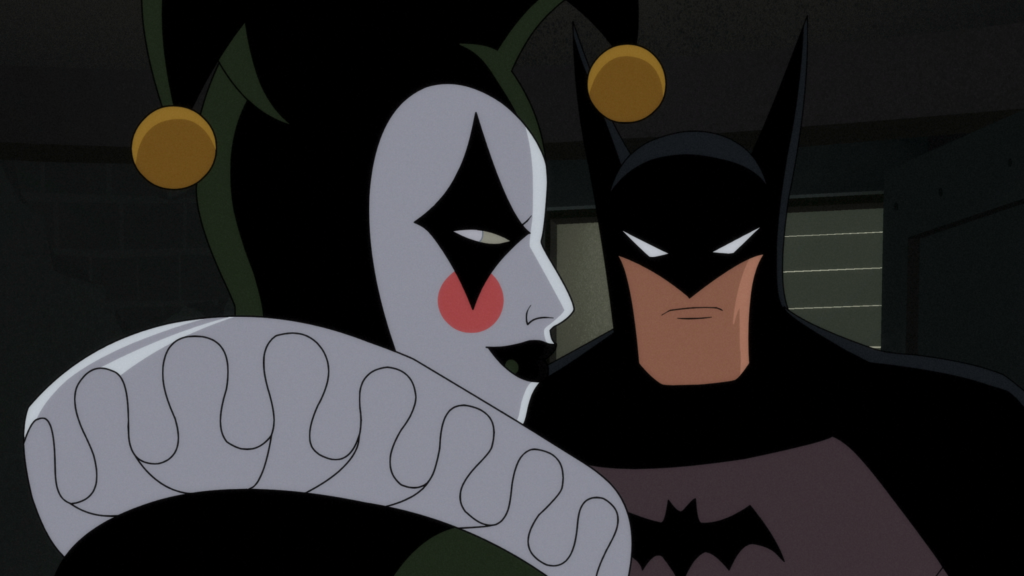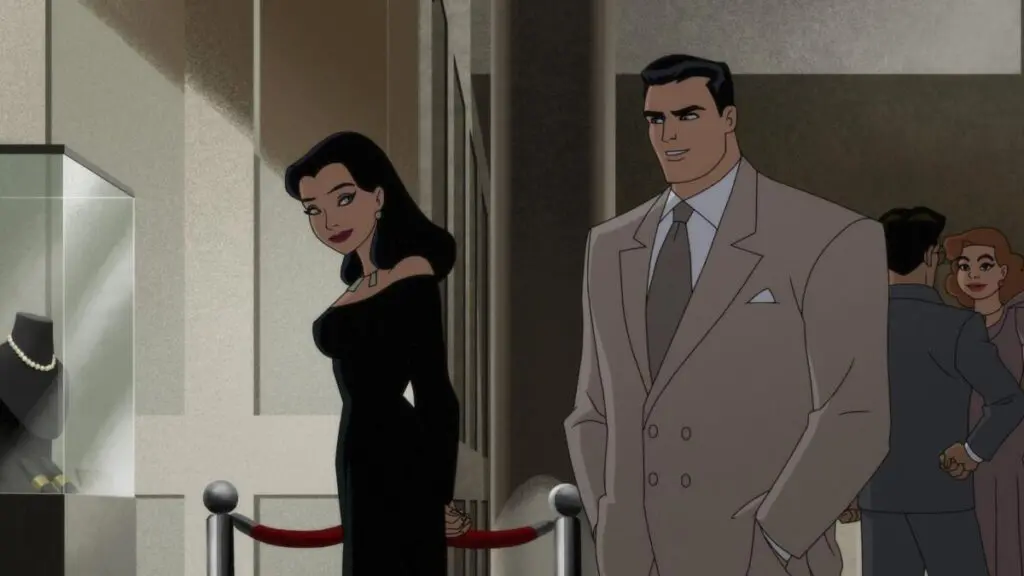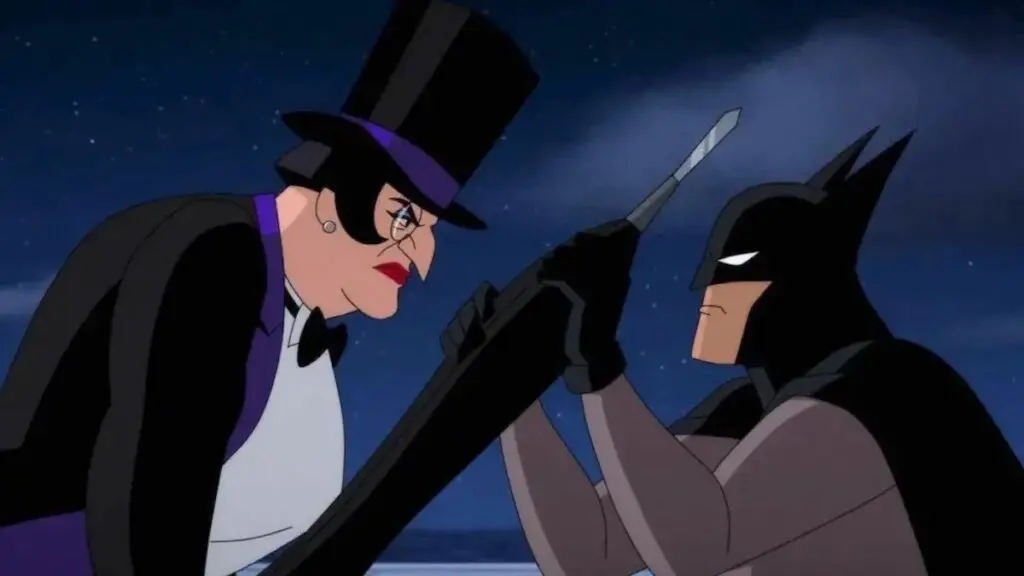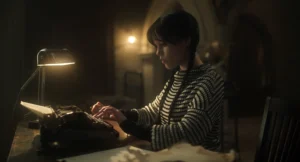You’ve probably heard by now that Prime Video’s Batman: Caped Crusader gender swaps long-time rogue, The Penguin, who is now a woman named Oswalda Cobblepot, played with obvious relish by Minnie Driver. This isn’t a big deal.
In fact, it’s not even the most significant character contortion in this series, let alone in the long, storied history of Batman and other significant heroes and villains from both Marvel and DC, almost all of which have, at various points, been completely reimagined by different artists and authors.
Naturally, some are acting like it’s the end of the world. Has Bruce Timm, of all people, kowtowed to the “woke mind virus” and ruined Batman forever with a tokenistic, placating iteration of The Penguin that undermines the very essence of the character? Or – and stop me if this sounds familiar – are people being ridiculous?
Let’s find out.
Yes, The Penguin Is A Woman Now – And No, You Shouldn’t Care

Minnie Driver voices Oswalda Cobblepot in Batman: Caped Crusader | Image via X
It would be naïve to pretend that a lot of resistance to change isn’t rooted in sexism, homophobia, and racism, but it’s also too convenient to pretend that any pushback against a creative decision is flat-out bigotry every time.
The key to having a balanced opinion is understanding a character in the first place. When you can identify their most essential characteristics, you can have an informed opinion about whether the underlying essence of that character has been violated by a particular change. This, I think, is why The Penguin being a woman for the first time in the character’s history doesn’t matter at all.
Here are the Penguin’s particulars, as a man:
- Is short, fat, ugly, and generally physically unintimidating.
- Is always a bad guy and is prone to violence.
- Dresses in a top hat and tails; has a monocle and an umbrella.
- Usually hangs around the Iceberg Lounge.
As a woman, The Penguin is fat, ugly, violent, heartless, well-dressed, has a monocle and usually hangs around the Iceberg Lounge, which in this depiction is a cabaret boat housing a den of criminal activity that Oswalda is into with her sons, Aaron and Ronald.
Why would anyone be upset about this?
The Penguin Doesn’t Need to Be Male

The Penguin as depicted in the Batman: Arkham video game series | Image via YouTube
The key thing here is that nothing about The Penguin as a character is defined by masculinity, so none of the character’s core qualities are altered by The Penguin being a woman.
On the flip side, there are new avenues of storytelling that open up to a female Penguin without having to compromise on anything. It’s a win-win.
This is why you sometimes have to wonder where the resistance is coming from. The Penguin in the beloved Batman: Arkham video games is a Bricktop-style Cockney gangster, and nobody cared. So, is the problem change, or is the problem change only as it pertains to gender and race?
Food for thought.
Batman: Caped Crusader Makes Changes To Several Characters

Alfred is one of many characters to undergo some minor changes in the Prime Video series
As I mentioned at the top of the article, gender-flipping The Penguin is one of several significant changes to well-established Batman characters, and a few could be seen as much more significant (yet somehow less “controversial”.)
For instance, Jim and Barbara Gordon are now Black. And while the former is still the police commissioner, the latter is a defense attorney, a job she hasn’t had in the comics or on-screen before. This career brings her into direct conflict with Harvey Dent, whose arc is much the same here aside from the fact he’s awful long before he becomes Two-Face.
Likewise, Alfred Pennyworth is now a former cop who took Bruce in by choice, instead of the family butler, but he still pesters Bruce to eat, criticizes his approach, and gives him sage advice, so in that sense, the character is virtually unchanged.
But then there’s Harley Quinn.
Harley Quinn Doesn’t Work, But Not For The Reasons You Think

Harley Quinn is the character who suffers most from reinvention
The problem with tokenistic character changes that are made solely for the sake of representation without fundamentally changing anything about the character is that they become scapegoats for genuinely detrimental reinterpretations. The only place this is relevant in Caped Crusader is regarding Harley Quinn.
Here, Dr. Harleen Quinzel is Asian-American, queer, and has no connection to the Joker – and none of these things matter. But Timm also took the bold step of inverting her Jekyll and Hyde persona so that now Harleen Quinzel is a faintly ditzy mental health professional while Harley Quinn is a very serious, torturing villain.
This loses a lot of what has been essential about Harley’s character ever since she organically evolved from being Joker’s love interest and sidekick in Batman: The Animated Series. Her namesake Max series already separated her from the Joker and explored her love life with Poison Ivy, so those more contentious aspects shouldn’t matter. But it’s too easy for idiots to point at the most visible changes and just claim, simply, that the character is ruined by trying to be “woke”, when the truth is that the off-kilter depiction stems from that personality inversion, not her being Asian or having a relationship with Renee Montoya.
Change Is Good

Bruce and Selina Kyle in Batman: Caped Crusader | Image via Prime Video
The irony is that, for the most part, Batman: Caped Crusader is a very good example of how to breathe new life into old characters without sacrificing their essential nature. The Penguin is still The Penguin as a woman; Barbara Gordon is still Barbara Gordon if she’s a Black attorney.
This might raise the question of why bother, though the answer should be obvious. More people – especially marginalized groups – getting to see themselves represented on-screen is a good thing. That’s one reason. Another is that, as mentioned earlier, these changes can open up new ways to tell stories about these characters.
But you have to be careful. Too much change, and you risk creating a new character entirely, and it doesn’t always work, as Harley doesn’t here. And bundling up these essential alterations with facile stuff like race and gender can confuse the issue. It’s too easy for loudmouthed bigots to blame not liking this version of Harley on her being Asian, as though changing the character’s ethnicity is the same as changing her personality, but on the flip-side, it’s too easy for the handwringing fun police to accuse anyone who doesn’t like this Harley of not liking her because she’s Asian, despite there being very legitimate criticisms to be made of this depiction.
Neither side wins, and neither does the show. But if the worst sin Batman: Caped Crusader commits is slightly misjudging some changes to a single character, there’s little to complain about. For the most part, this series is a fine example of how to balance the old with the new, and how to tweak things both fundamentally and superficially without losing a character’s identity.
The effort should be commended. The hysterical pushback should be ignored. But let’s not get too carried away either.




